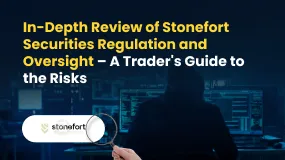简体中文
繁體中文
English
Pусский
日本語
ภาษาไทย
Tiếng Việt
Bahasa Indonesia
Español
हिन्दी
Filippiiniläinen
Français
Deutsch
Português
Türkçe
한국어
العربية
Weekly Fundamental Euro Forecast: Further Losses Expected
Abstract:The Euro just experienced one of its worst weeks in years: versus the US Dollar, since March 2020; versus the Swiss Franc, since January 2015.

FUNDAMENTAL FORECAST FOR THE EURO: BEARISH
ECB rate expectations are in retreat, and liquidity conditions have deteriorated substantially – neither of which are good for the Euro.
According to the IG Client Sentiment Index, the Euro has a bearish bias heading into mid-March.
EURO WEEK IN REVIEW
It was a brutal week for the Euro as the Russian invasion of Ukraine intensified. Sweeping sanctions by the European Union and the United States, while punishing for the Russian economy, have reverberated back to the Euro as economic risks skyrocket for the Eurozone.
On the low end, EUR/GBP rates lost -1.68%, their worst weekly loss since mid-November 2021. EUR/USD rates dropped by -3.03%, their worst weekly loss since mid-March 2020, the start of the COVID-19 pandemic. EUR/CHF rates, which plunged by -3.98%, experienced their worst weekly decline since January 2015, when the Swiss National Bank removed the floor in the exchange rate.
With commodity prices soaring as energy and grain supplies appear threatened in the short-term, several other EUR-crosses produced even more dramatic losses. EUR/CAD rates slumped by -2.84%, EUR/NZD rates lost -4.68%, and EUR/AUD rates sank by -4.98%.
EUROZONE ECONOMIC CALENDAR TAKES BACK SEAT
The reverberation of the Russian invasion of Ukraine back to the Euro has taken two forms. First, market expectations for a more hawkish European Central Bank have evaporated over the past week (more below). Second, liquidity conditions have deteriorated (as measured by EUR/USD basis swaps), underscoring the greatest demand for US Dollars by financial institutions since the early days of the COVID-19 pandemic.
That said, here are the key events in the week ahead on the Eurozone economic calendar:
On Monday, March 7, January German retail sales are due at 07:00 GMT.
On Tuesday, March 8, January Italian retail sales are set to be released at 09:00 GMT, while the final estimate of 4Q21 Eurozone GDP will be published at 10:00 GMT. February Spanish consumer confidence is due at 16:00 GMT.
On Wednesday, March 9, January Italian industrial production figures will be released at 09:00 GMT.
On Thursday, March 10, the ECB interest rate decision is due at 12:45 GMT while the ECB Christine Lagarde will hold a press conference at 13:30 GMT. The ECBs macroeconomic projections will be released at 14:30 GMT.
On Friday, March 11, final February German inflation rates will be published at 07:00 GMT, February Spanish inflation rates will come out at 08:00 GMT.
For full Eurozone economic data forecasts, view the DailyFX economic calendar.
RUSSIA PROVOKES BEAR MARKET IN ECB HIKE ODDS
Russias invasion of Ukraine is provoking liquidity strains across the global financial sector, with European banks at the center of the storm. There is a non-zero chance that the EU and US sanctions on the Central Bank of Russia provokes a liquidity crunch for European banks that persists for the foreseeable future.
In turn, this may be providing the excuse ECB officials need to justify keep their asset purchase program in place through 3Q‘22, and interest rates lower for longer. We’ll hear from the ECB this week at their March rate decision, which should shine light on their perspective, alongside the release of their updated Staff Economic Projections (SEP).
EUROPEAN CENTRAL BANK INTEREST RATE EXPECTATIONS (MARCH 4, 2022) (TABLE 1)

Disclaimer:
The views in this article only represent the author's personal views, and do not constitute investment advice on this platform. This platform does not guarantee the accuracy, completeness and timeliness of the information in the article, and will not be liable for any loss caused by the use of or reliance on the information in the article.
Read more

MH Markets Deposits and Withdrawals Overview: A Data-Driven Analysis for Traders
For any experienced trader, the integrity of a broker is not just measured by its spreads or platform stability, but by the efficiency and reliability of its financial plumbing. The ability to deposit and, more importantly, withdraw capital without friction is a cornerstone of trust. This review provides an in-depth, data-driven analysis of the MH Markets deposits and withdrawals overview, examining the entire fund management lifecycle—from funding methods and processing speeds to fees and potential obstacles. MH Markets, operating for 5-10 years under the name Mohicans Markets (Ltd), has established a global footprint. With a WikiFX score of 7.08/10, it positions itself as a multi-asset broker offering a range of account types and access to the popular MetaTrader platforms. However, for a discerning trader, the real test lies in the details of its payment systems and the security of their funds. This article dissects the MH Markets funding methods withdrawal experience, leveraging pr

In-Depth Uniglobe Markets Commission Fees and Spreads Analysis – What Traders Should Really Know
For experienced traders, the cost of execution is a critical factor in broker selection. Low spreads, fair commissions, and transparent pricing can be the difference between a profitable and a losing strategy over the long term. This has led many to scrutinize the offerings of brokers like Uniglobe Markets, which presents a tiered account structure promising competitive conditions. However, a professional evaluation demands more than a surface-level look at marketing claims. It requires a deep, data-driven analysis of the real trading costs, set against the backdrop of the broker's operational integrity and safety. This comprehensive Uniglobe Markets commission fees and spreads analysis will deconstruct the broker's pricing model, examining its account types, typical spreads, commission policies, and potential ancillary costs. Using data primarily sourced from the global broker inquiry platform WikiFX, we will provide a clear-eyed view of the Uniglobe Markets spreads commissions prici

In-Depth Review of Stonefort Securities Regulation and Oversight – A Trader's Guide to the Risks
For experienced traders, the process of selecting a new broker transcends a simple comparison of spreads and leverage. It is a meticulous due diligence exercise where the integrity of the broker's regulatory framework is paramount. Stonefort Securities, a relatively new entrant in the crowded brokerage space, presents a complex and often contradictory profile. On one hand, it boasts a modern MT5 platform and a stream of positive user testimonials. On the other hand, it is shadowed by severe regulatory warnings that question the very foundation of its operations. This in-depth review focuses on the core issue for any long-term trader: Stonefort Securities regulation and oversight. We will dissect the broker's corporate structure, scrutinize its licensing claims, and analyze what the data implies for trader protection and fund security. For traders evaluating whether Stonefort Securities is a trustworthy partner, understanding these details is not just important—it is essential.

FXPesa Review: Are Traders Facing High Slippage, Fund Losses & Withdrawal Denials?
Do FXPesa support officials fail to pick up your calls when you raise fund withdrawal requests with the broker? But are these officials always open to you regarding fund deposits? Do you frequently spot slippage and stop-loss order execution errors on the FXPesa login? These issues are increasingly becoming common with this forex broker. Consequently, many traders have expressed their dissatisfaction with the broker online. In this FXPesa Review article, we have shared some of these complaints. Take a look!
WikiFX Broker
Latest News
GCash Rolls Out Virtual US Account to Cut Forex Fees for Filipinos
WikiFX's New Evaluation of ATM Capital LTD: Does its License Protect the Arab Investor?
How a Fake Moomoo Ad Led to the “New Dream Voyage 5” Scam
Is Axi Legit? A Data-Driven Analysis of Its Regulatory Standing and Trader Feedback
Trive Investigation: High Score, Hidden Risk - The Profit Paradox
In-Depth Uniglobe Markets Commission Fees and Spreads Analysis – What Traders Should Really Know
FXPesa Review: Are Traders Facing High Slippage, Fund Losses & Withdrawal Denials?
CMC Markets Australia Revenue Surges 34%, But High-Net-Worth Clients Face Tax Phishing Threat
The 350 Per Cent Promise That Cost Her RM604,000
INZO Commission Fees and Spreads Breakdown: A 2025 Data-Driven Analysis for Traders
Currency Calculator



